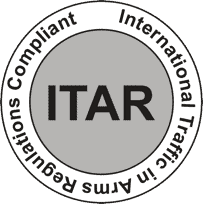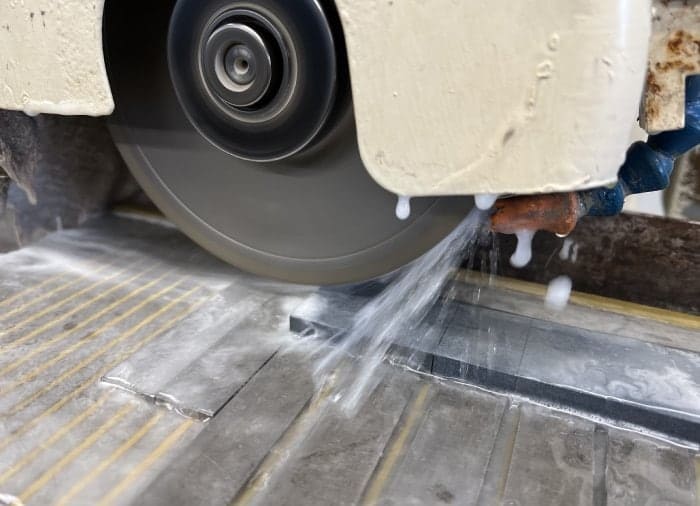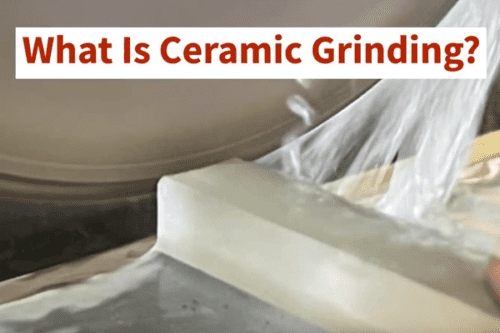Ceramic Grinding & Machining
Ceramics are among the oldest and most versatile formable materials. Today ceramics can be found in a range of commercial, industrial, and consumer products, thanks to their high-strength properties. Although ceramics are somewhat brittle and difficult to machine, an expert ceramic machining company can leverage their specialized knowledge of the material to design and manufacture precision ceramic parts.
What Is Ceramic Grinding?
Unlike traditional grinding, ceramic grinding involves a grinding wheel that removes tiny chips from the surface of the material. These chips are very hard and brittle, so the process requires specialized tooling and methods. Ceramic machining includes both the design and manufacturing process of precision components.
Optimization of Ceramic Grinding
In general, grinding utilizes abrasive tools or grains to chip away at the workpiece, generating high heat that may damage the machined component, cause surface tempering, or create unwanted deformities. These concerns are especially pronounced with ceramic grinding, where the workpiece is harder and more brittle.
To address these concerns, ceramic grinding tools must be selected carefully depending on the type of ceramic. The right pairing will improve the efficiency of the ceramic grinding wheel. Technicians should also control heat and friction generation through a lubri-refrigeration method and by using enough cutting fluid. In addition to cooling the ceramic, cutting fluid is crucial to clearing away chips in the grinding process and making sure grinding wheel pores remain debris-free. Keeping the workpiece cool and properly flushed not only improves dimensional accuracy and quality but also extends tool life.
Ceramic Grinding Benefits
Ceramic grinding is an essential process in achieving tight tolerances in otherwise impossible-to-cut materials. Machining them requires superior tooling—such as special diamond tooling—that can create unique properties and high accuracy in the final components, which must meet complex and heavy-duty demands. Since ceramic machining is an expensive and labor-intensive process, it is limited to specialized applications. However, these applications serve critical purposes in the healthcare, defense, electronics, automotive, wear parts, and refractory sectors.
Machining Tolerances
Machining precision plays a significant role in the success of a project, so it’s best to use a wheel with tight machining tolerances. For example, a grinder with a ± 0.001 inch tolerance can achieve a ± 0.0005 inch part tolerance with a 24 Ra surface finish. Here are the tolerance and surface finish capabilities of different ceramic grinding machines:
Tolerance of ± 0.00025” and 24 Ra surface finish
Tolerance of ± 0.0004” and a surface finish of 8-16 Ra
Tolerance of ± 0.0004” and a surface finish of 8-16 Ra
Tolerance of ± 0.0003” and 2 Ra surface finish
Ceramic Grinding Methods
At Quartzite Processing, we use different ceramic grinding methods to achieve our customers’ various specifications. We perform all measurements and techniques in an in-house, climate-controlled facility. Once our machinists finish grinding, they check each component to make sure it meets customer expectations.
ID grinding, or inside diameter grinding, removes material from the inside diameter of a cylindrical or conical workpiece. This precise technique can create holes, tapers, and other hollow centers.
Also called outside diameter grinding, OD grinding removes material from the outside diameter of a cylindrical workpiece. This technique requires the workpiece to rotate on a central axis.
Unlike OD grinding, centerless grinding does not require the workpiece to be held via a central axis of rotation. Instead, the workpiece rests on an angled workblade between two wheels: one grinding wheel, which removes material from the outer diameter, and one regulating wheel, which holds and positions the workpiece for grinding.
Mostly used for flat workpieces, surface grinding utilizes a grinding wheel covered in abrasive particles to gradually remove material. This process creates flat, smooth surfaces.
Honing is a specialized form of ID grinding that refines the surface finish and shape of a workpiece’s inside diameter.
Also known as ultrasonic machining, this technique utilizes an abrasive-laden slurry and ultrasonic vibrations to create shapes and holes in a workpiece. This subtractive method chips away small amounts of material at a time, enabling greater control of the final product’s dimensions.
Profile grinding involves dressing the grinding wheel with the desired profile so that the final product aligns with the proper shape and tolerances.
Form grinding, also called nongenerating grinding, is a specialized cylindrical grinding process that utilizes a grinding wheel in the exact shape of the finished product. A disc wheel grinds both sides between splines simultaneously, and the form on the face of the grinding wheel is transferred to the workpiece.
Ceramic Grinding Applications
Ceramic grinding can produce automotive pistons, coatings, linings, embeds, and valves; biocompatible bone substitutions and cardiovascular inserts; mechanical valves and seals; rocket lining plates, heater segments, and insulators for refractories; bases and insulators for electrical components; and custom ceramic parts.
The most common machines that perform ceramic machining include:
Wafer Dicing Machine
This machining process separates dice from semiconducting wafers. The separation occurs through laser cutting, scribing and breaking, or mechanical sawing. Once complete, the chips produced can be encapsulated in chip carriers and used in other electronic applications.
CNC Mill
Computer numerical control (CNC) milling is an automated machining process that can be customized for ceramic grinding. It uses computer-aided designs (CAD) and computer-controlled tooling to remove material from the workpiece and create the desired components.
Core Drill
This ceramic machining application entails removing cylindrical cores from drill holes. The process allows for clean removal and analysis of the material’s core.
ID Slicer
Internal or inner diameter (ID) slicing operations make repeated cuts on hard and brittle surfaces, like ceramics. An ID slicing saw is a ring-shaped device with a diamond-plated inner diameter, which enables precise cutting and minimal kerf loss.
Surface Grinder
Surface grinding is a refining operation that uses a ceramic grinding wheel to smooth the workpiece’s surfaces and edges to tight tolerances.
Quartzite Processing Inc.’s Grinding Size Capabilities
For over 65 years, Quartzite Processing Inc. has been a leading precision ceramic grinding manufacturer thanks to our expertise in diamond tooling and ceramic materials. Our team is skilled in machining workpieces to tight tolerances.
From our facility in Malden, Mass., we provide a full range of ceramic grinding and machining services to meet increasing market demand. Using the latest technologies, we’ve developed the capacity to handle large-volume, multi-operational, and complex projects. Our grinding capabilities include:
These are our grinding size capabilities:
| Characteristic | Dimension |
| Length | 16” |
| Width | 16” |
| Thickness | 16” |
| OD Largest | 14” |
| OD Smallest | 0.025” |
| ID Largest | 12” |
| ID Smallest | 0.030” |
When you choose our ceramic machining services, you’re guaranteed timeliness, precision, cost-effectiveness, and quality control. Partnering with a skilled ceramic parts manufacturer is vital to ensuring your final products meet your application’s performance, quality, and dimensional requirements.



